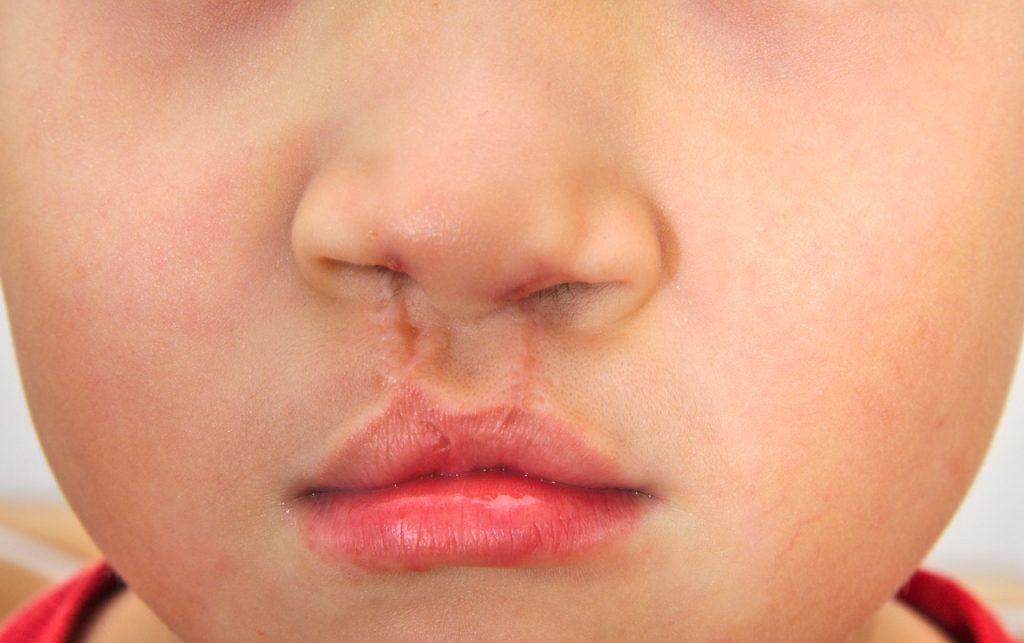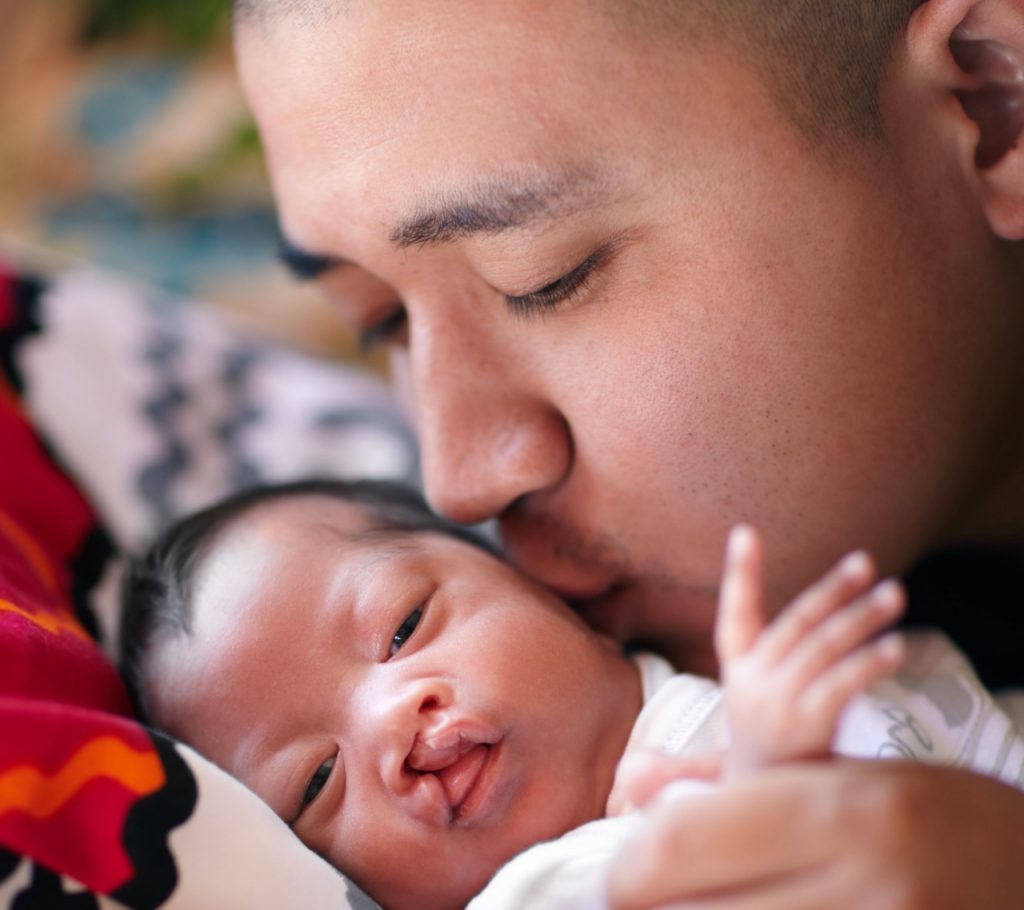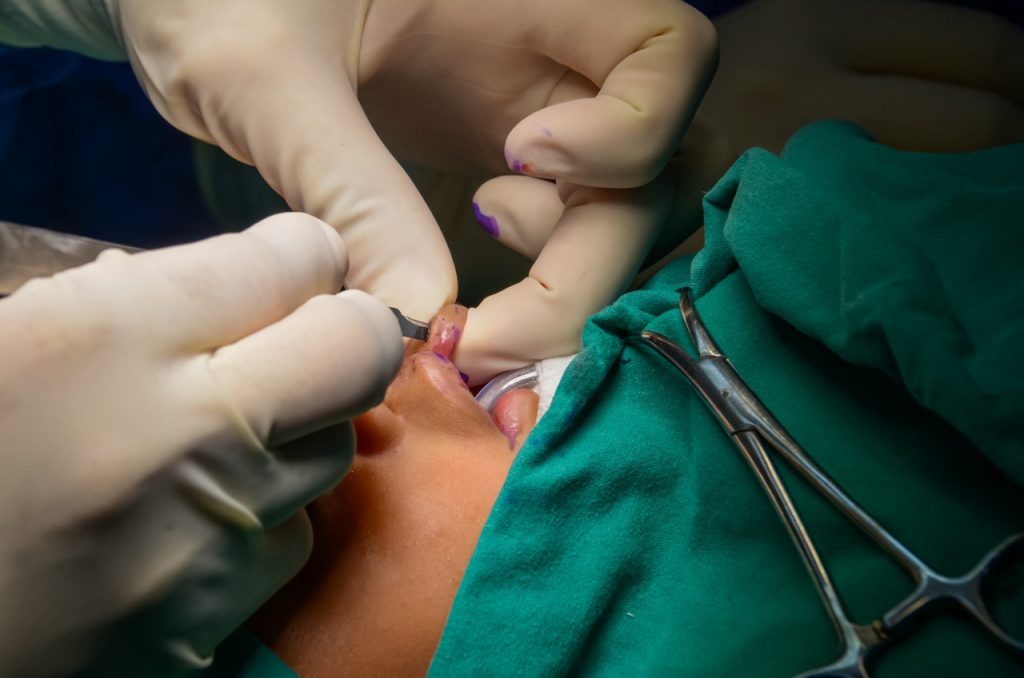Resource Library
Start Reading

Does your child have a cleft palate? It is among the most common birth defects in the world, affecting up to one in 800 live births.
In the United States alone, about one in every 1,700 babies is born with a cleft palate. About one in every 1,600 is born with cleft lip and cleft palate.
Naturally, knowing the condition is common doesn’t ease your concern about how it affects your child. A cleft palate can make it more difficult for them to eat, swallow, speak, and even breathe.
It can also have negative impacts on their dental and oral health. At Penn Dental Family Practice (PDFP), our experts can address the oral health challenges associated with the condition. Our therapies and treatments let children breathe easier, eat and speak more easily, and smile with confidence.
Read on for information about the main types of cleft palate, their causes, how cleft palate affects teeth, and how dental professionals can address and minimize its impacts.
 The palate of the mouth is the roof of the oral cavity separating the mouth from the nasal cavity. It’s vital to such everyday functions as speaking, chewing, and swallowing.
The palate of the mouth is the roof of the oral cavity separating the mouth from the nasal cavity. It’s vital to such everyday functions as speaking, chewing, and swallowing.
The palate consists of two parts. The hard palate at the front is made up of bone and covered with a mucous membrane. The soft palate at the back is made of muscle and connective tissue.
Cleft palates fall into three main types:
In its most severe form, the cleft in the palate can extend from the palate’s front to its back. The cleft may also involve the lip, resulting in a complete cleft lip and palate.
An incomplete cleft palate involves a smaller gap, usually toward the back of the palate. Incomplete (or partial) cleft palates don’t always require extensive treatment.
A submucous cleft palate is less visible but still affects palate structure. A mucous membrane covers the abnormalities beneath the palate’s surface, making them less noticeable.
Submucous cleft palates can look like depressions or notches in the palate. Although sometimes they can be felt with a fingertip, they may only become apparent when such symptoms as difficulty with feeding or persistent ear infections arise. Abnormal nasal speech can also be an indicator.
Generally, submucous cleft palates don’t require surgical treatment. Parents and caregivers can use special feeding techniques, obtain treatment for ear infections from their child’s pediatrician, and take the child to speech and language therapists as needed.
 A combination of factors may cause cleft palate. These factors include:
A combination of factors may cause cleft palate. These factors include:
Beyond the breathing, eating, and speech difficulties it causes, cleft palate poses challenges to good dental hygiene and oral health.
Food particles and bacteria may become trapped in the cleft, increasing the risk of tooth decay and gum disease. Patients’ saliva may also dry out more quickly, allowing the bacteria that cause decay and disease to thrive. And they may be at a higher risk for misaligned, missing, or overcrowded teeth.
Dental care for children with cleft palate requires a multidisciplinary approach. Dentists collaborate with oral surgeons, orthodontists, and prosthodontists to create a comprehensive treatment plan tailored to each patient’s needs.
Oral surgeons typically repair cleft palates when a child is between 6 and 12 months old. This time frame allows for proper healing and development of speech and feeding skills. Severe cases may require multiple surgeries.
Orthodontists work to ensure proper alignment of the teeth and jaw, which cleft palate can affect. Orthodontic care may involve braces, retainers, or other appliances to correct misaligned teeth and create a healthy bite.
What is prosthodontics? It is a dental specialty focused on creating and fitting dental prostheses. Prosthodontists can create such custom-made prosthetics as palatal obturators, speech aids, and dental implants to help correct structural and functional issues. These devices help individuals eat, speak, and smile more comfortably and confidently.
 Regular oral hygiene at home is as important to children with cleft palate as it is to all individuals.
Regular oral hygiene at home is as important to children with cleft palate as it is to all individuals.
Parents and caregivers should clean babies’ gums with a damp washcloth or gauze after feedings. They should start children on a routine of brushing twice daily with fluoride toothpaste as soon as teeth appear. Special toothbrushes and other aids for mouths with cleft palate are available.
Children should visit a dentist as soon as possible and require regular checkups to monitor their oral health and address any issues that may arise. Early intervention and regular dental care can help prevent more serious issues in the future and contribute to the child’s overall health and well-being.
To schedule an appointment at PDFP for your child, visit our website or call us at 215-898-PDFP (7337).